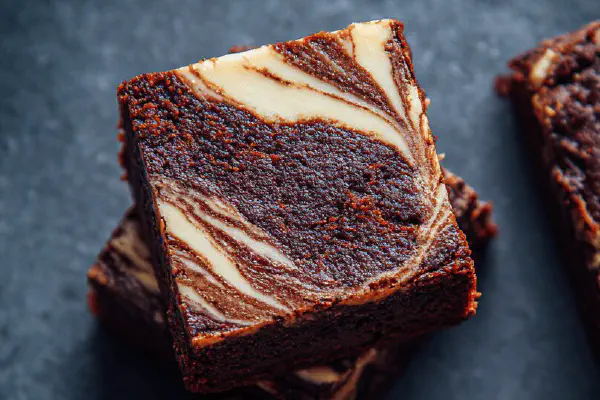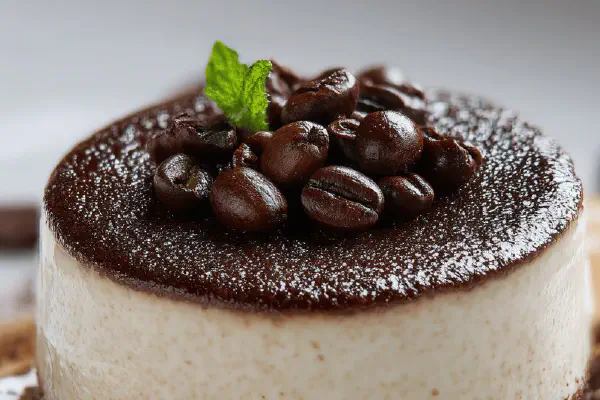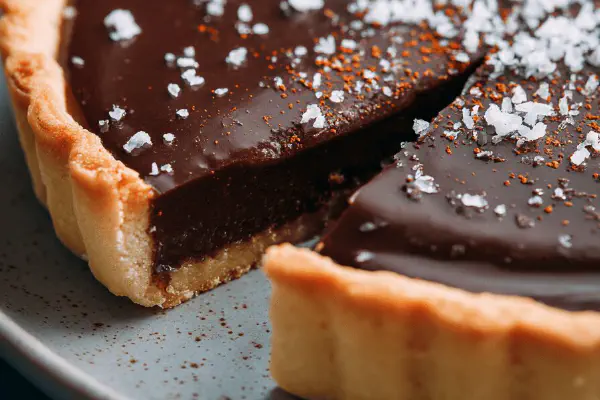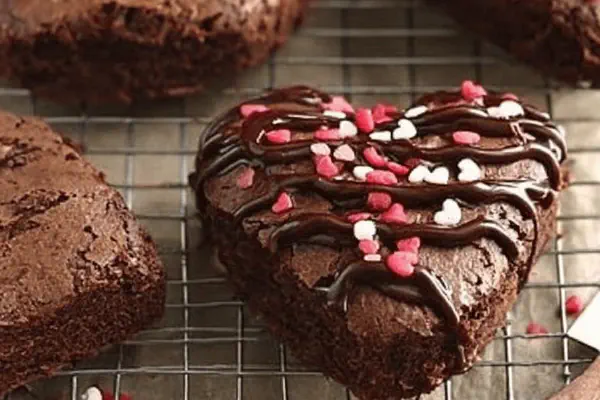Twisted Chocolate Cake
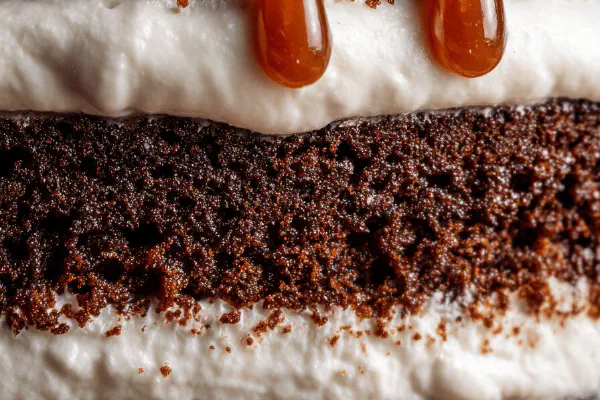
By Emma
Certified Culinary Professional
Ingredients
Cake
- 210 g (1 1/2 cups) all-purpose flour, sifted
- 90 g (3/4 cup) unsweetened cocoa powder, screened
- 12 ml (2 1/2 tsp) baking powder
- 8 large eggs, room temperature
- 7 ml (1 1/2 tsp) cream of tartar
- 440 g (2 1/4 cups) granulated sugar
- 180 ml (3/4 cup) vegetable oil
- 200 ml (3/4 cup) buttermilk
- 10 ml (2 tsp) almond extract
- 1 tsp instant espresso powder (optional but recommended)
Syrup
- 90 g (1/3 cup) granulated sugar
- 180 ml (3/4 cup) water
- 1 cinnamon stick
Frosting
- 230 g (1 cup) unsalted butter, softened
- 80 ml (1/3 cup) vegetable oil
- 90 ml (1/3 cup) heavy whipping cream 35%
- 150 g (2/3 cup) mascarpone cheese, slightly softened
- 520 g (4 cups) powdered sugar, sifted
About the ingredients
Method
Cake
- Place oven rack in center; preheat oven to 175 °C (350 °F). Line bottoms of two 20 cm (8 inch) springform pans with parchment. Butter sides and dust lightly with flour. Helps to prevent cake collapse.
- In a large bowl, mix flour, cocoa, espresso powder, and baking powder thoroughly. Dry ingredients evenly combined avoid patchy cocoa lumps.
- Use a stand mixer or hand mixer; whip eggs, sugar and cream of tartar on high until volume doubles or forms thick ribbons when beaters lift — about 12 minutes. Meringue stage crucial for airiness.
- Lower speed, fold in oil slowly, then buttermilk, almond extract. Alternate folding flour mixture gently in thirds to avoid knocking out air. Batter thickening but still loose, uniform color.
- Divide batter evenly between pans. Tap gently to release big air bubbles.
- Bake about 50 to 55 minutes; watch edges pulling from pans, surfaces dry but still slightly springy. Use toothpick test: when inserted near center, should come out with a few moist crumbs — not sticky batter.
- Cool 15 minutes on wire rack, remove from pans. Cool completely before slicing.
Syrup
- Heat sugar, water, and cinnamon stick in saucepan. Bring to full simmer, stir until sugar dissolves. Remove cinnamon, cool syrup to room temperature. Syrup adds moisture and flavor punch.
Frosting
- Beat butter and mascarpone till fluffy. Slowly add oil and cream while mixing; makes texture softens, silky.
- Add powdered sugar gradually; beat at medium speed until fluffy and spreadable; not dry or runny.
Assembly
- Using a serrated knife, trim domes off cakes if risen uneven; cut each cake horizontally into two layers making four total.
- Brush each layer evenly with syrup using a pastry brush. Don’t soak excessively or crumb will turn to mush.
- Spread frosting generously between layers with spatula. Stack carefully on a serving plate to keep layers aligned.
- Use remaining frosting to coat outside. Scrape sides smooth or leave slightly textured — personal preference.
- Chill 30 minutes before serving to set structure. Cake keeps well refrigerated up to 3 days; let sit out 20 minutes before slicing for softer crumb.
Tips and Troubleshooting
- If no buttermilk, add 1 tbsp vinegar or lemon juice to milk, let rest 5 min.
- Almond extract can be replaced with orange zest for citrus twist.
- Omitting espresso powder is fine; adds subtle depth but not overpowering.
- Overmixing dry ingredients ruins the fluffiness; fold with care.
- If frosting too stiff, a splash of milk adjusts consistency without losing structure.
Cooking tips
Chef's notes
- 💡 Whip eggs and sugar with cream of tartar until thick ribbons fall from beaters. Takes around 12 minutes. Underwhip and cake collapses, overwhip dries batter. Listen for soft peaks first, then heavy gloss. Volume doubles visibly. Slow fold oil and wet ingredients in thirds, gentle is key. Don’t lose trapped air or cake turns dense. Fold with rubber spatula scraping bottom, swirling edges up.
- 💡 Syrup eases moisture, cinnamon stick gives warmer notes than plain sugar water. Simmer sugar and water fully until dissolved—don’t rush. Cool before brushing layers, hot syrup melts frosting. Brush thin layers, avoid soaking to mush. Syrup layers timing matters. Apply when cake still slightly warm but not hot. Too cold or too wet changes crumb texture and bite feel.
- 💡 Oven temps vary. Watch edges pull from pan, not just minutes. Toothpick test near center: a few moist crumbs but no raw batter. Tap springform slightly before baking to release big air bubbles, avoids holes in final crumb. Once baked cool 15 min in pan then fully on rack. Trimming domes clean edges but some crumbs left okay. Bleeding frosting happens if crumbs too loose; chill cake first if crumb unstable.
- 💡 Frosting with mascarpone adds tang and silkiness over straight buttercream. Beat butter and mascarpone till fluffy first, medium speed. Slowly add oil and cream while mixing to keep smooth. Powdered sugar added gradually prevents gritty or stiff texture. Avoid overbeating frosting at high speed; it curdles or separates. Chill frosting if too soft. Rewhip gently if needed before spreading.
- 💡 Almond extract swaps vanilla for nuttier aroma; no vanilla bitterness, subtle florals instead. Espresso powder tiny but mighty; dissolve with dry ingredients for even bite. Skip espresso for pure cocoa taste, add more cocoa powder instead. Acid in buttermilk or acidified milk vital to react with baking powder, keeps crumb tender. No buttermilk? Add lemon juice or vinegar to milk and rest 5 minutes; acidity materializes.
Common questions
How to know when eggs are whipped enough?
Look for thick ribbons falling from beaters slowly. Should double volume. If dry or sharp peaks form, overwhipped. Too loose means under whipped. Takes 10-12 minutes at high speed. Cream of tartar essential. No fluff, dense cake later.
Can I replace mascarpone in frosting?
Options here—cream cheese closest but more tangy, shifts flavor. Heavy cream and butter only makes classic buttercream, less silky. Skip mascarpone make frosting stiffer but still workable. Adjust sugar to balance acidity if using cream cheese. No mascarpone changes mouthfeel, down smoothness but holds.
Why does my cake sometimes collapse in middle?
Usually underwhipped eggs or folding too rough. Air traps burst. Overbaking dries edges but can cause center slump too. Oven too hot or inaccurate temps also. Timing toothpick checks help. Fix by gentle folding, not rushing batter distribution.
How long keep cake refrigerated?
Up to 3 days best. Keep in airtight container to avoid drying. Bring to room temp 20 minutes before serving so crumb softens. Frosting can firm too much cold, rewhip if too stiff. Freezing layers possible but disrupts syrup moisture distribution. Fresh is best for texture but fridge necessary.
